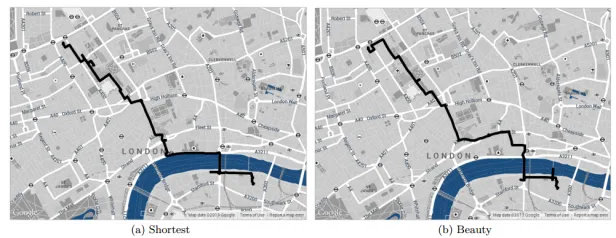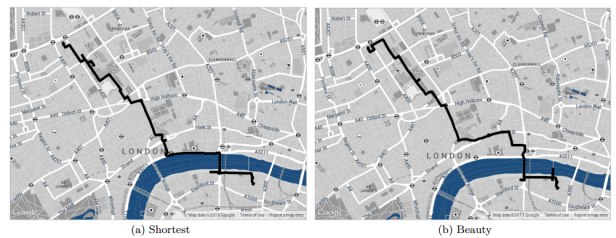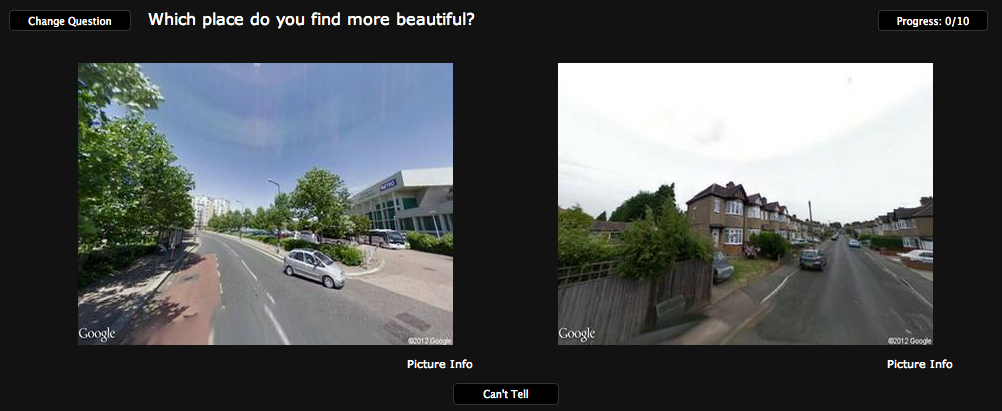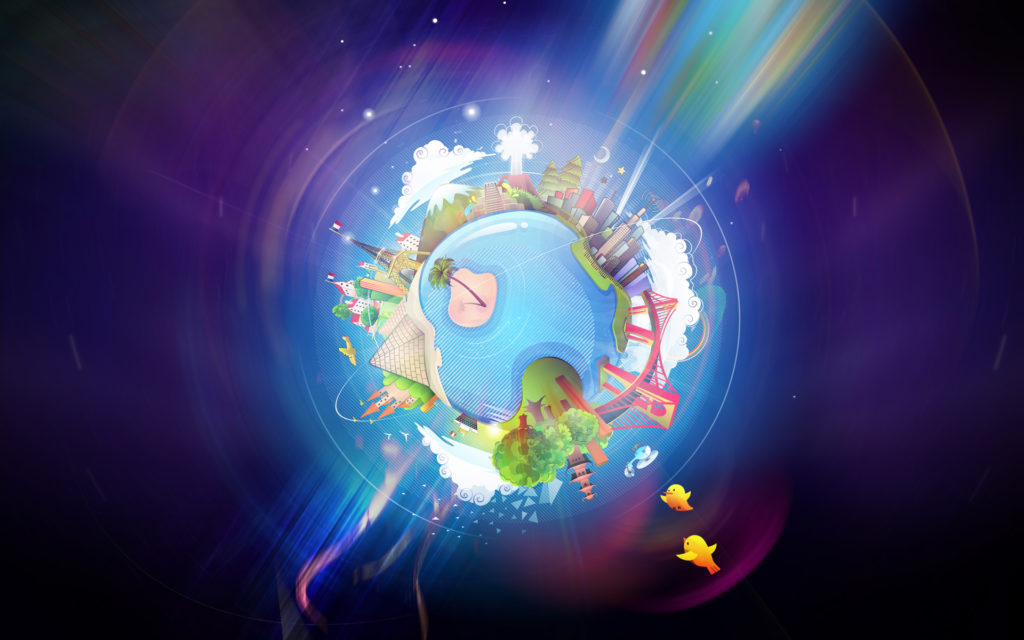
The new algorithm finds the most beautiful route from A to B
 When you select parameters of your route in your GPS navigation device or app you typically have several options to choose from: the fastest, the shortest, optimal etc. That’s usually good enough when driving. Pedestrians on the other hand have typically different expectations. They would prefer the quietest or the most beautiful route. Unfortunately if they turn to any mapping app, they’ll get little help.
When you select parameters of your route in your GPS navigation device or app you typically have several options to choose from: the fastest, the shortest, optimal etc. That’s usually good enough when driving. Pedestrians on the other hand have typically different expectations. They would prefer the quietest or the most beautiful route. Unfortunately if they turn to any mapping app, they’ll get little help.
That could change now thanks to the work of Daniele Quercia at Yahoo Labs in Barcelona and his pals. These guys have worked out how to measure the “beauty” of specific locations within cities and then designed an algorithm that automatically chooses a route between two locations in a way that maximizes the beauty along it.
What they did was to take Google Street View images of a various parts of the center of London and put it into a website called UrbanGems.org, where they show to people two images and ask which one is more beautiful. That gives the team a crowdsourced opinion about the beauty of each location which they transform into a measurable score . They then plot each of these locations and their beauty score on a map which they use to provide directions.
The tests showed that on average these routes turn out to be just 12 percent longer than the shortest routes, which makes them reasonable alternatives for a pedestrian.
Based on that promising results the team started to think how to automatize the process. They chose some five million Flickr pictures taken in the same places as their original photos and then mined the data associated with them to see what parameters correlated with beauty. The number of pictures taken of a particular scene and comments associated with positive emotions turned to be reliable indicators of a beautify of a location.
Of course this approach is a simplification of a reality and companies like Google or Facebook could surely have much more data for reliable results. Nevertheless, this is an interesting approach that has the potential to change the experience people have in interacting with the city.







